“I felt ill, like I couldn’t breathe,” says the Australian quilt maker and author, who also has insomnia before a show. “I can’t think straight. I want to hide, to avoid meeting people and new situations.”
Being around large groups of people “scares me,” says thread importer Richard Kennair, who gets panic attacks at trade shows and sometimes has to “drop everything in the booth and just walk away.”
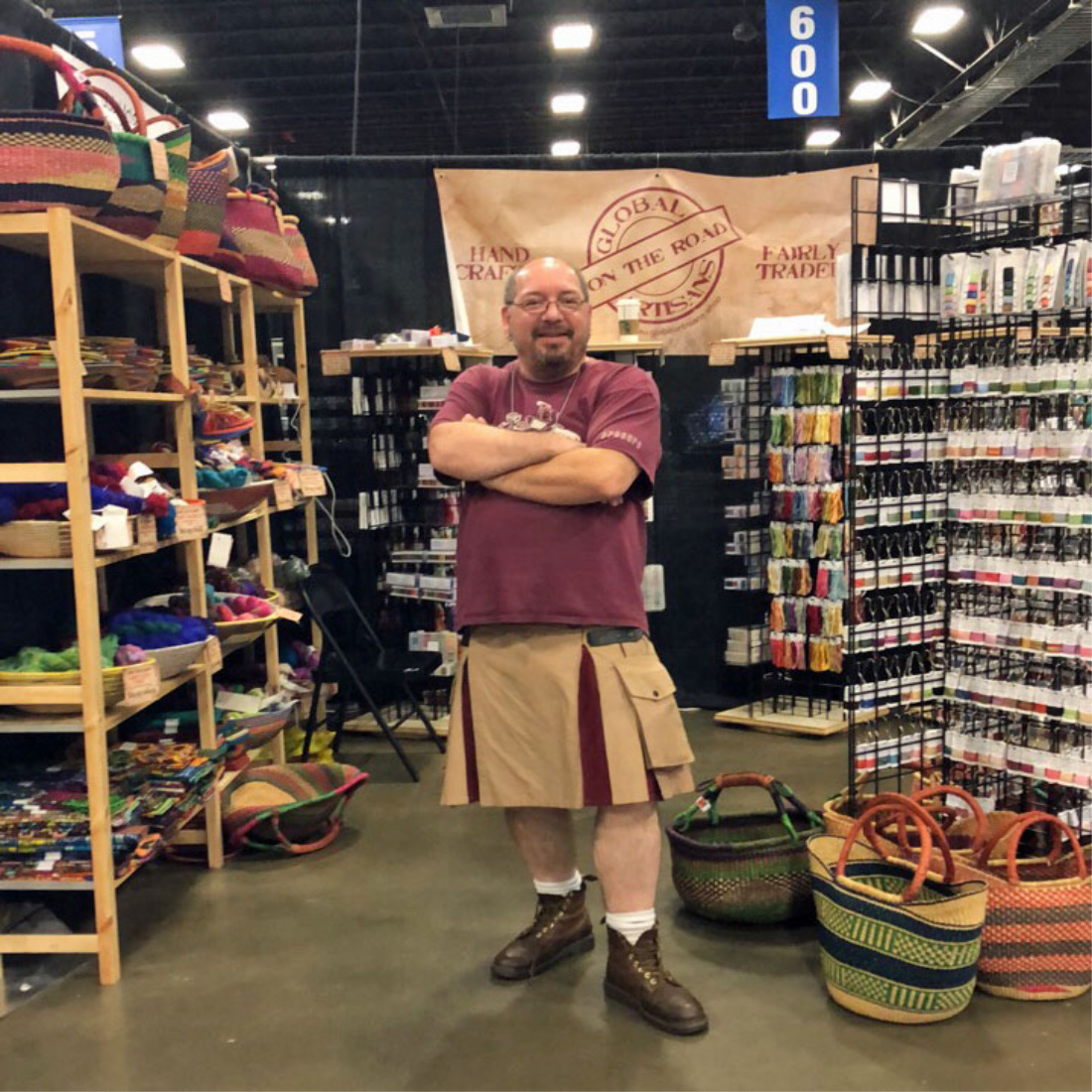
Richard Kennair, importer of House of Embroidery threads and ribbons.
Photo courtesy of Richard Kennair
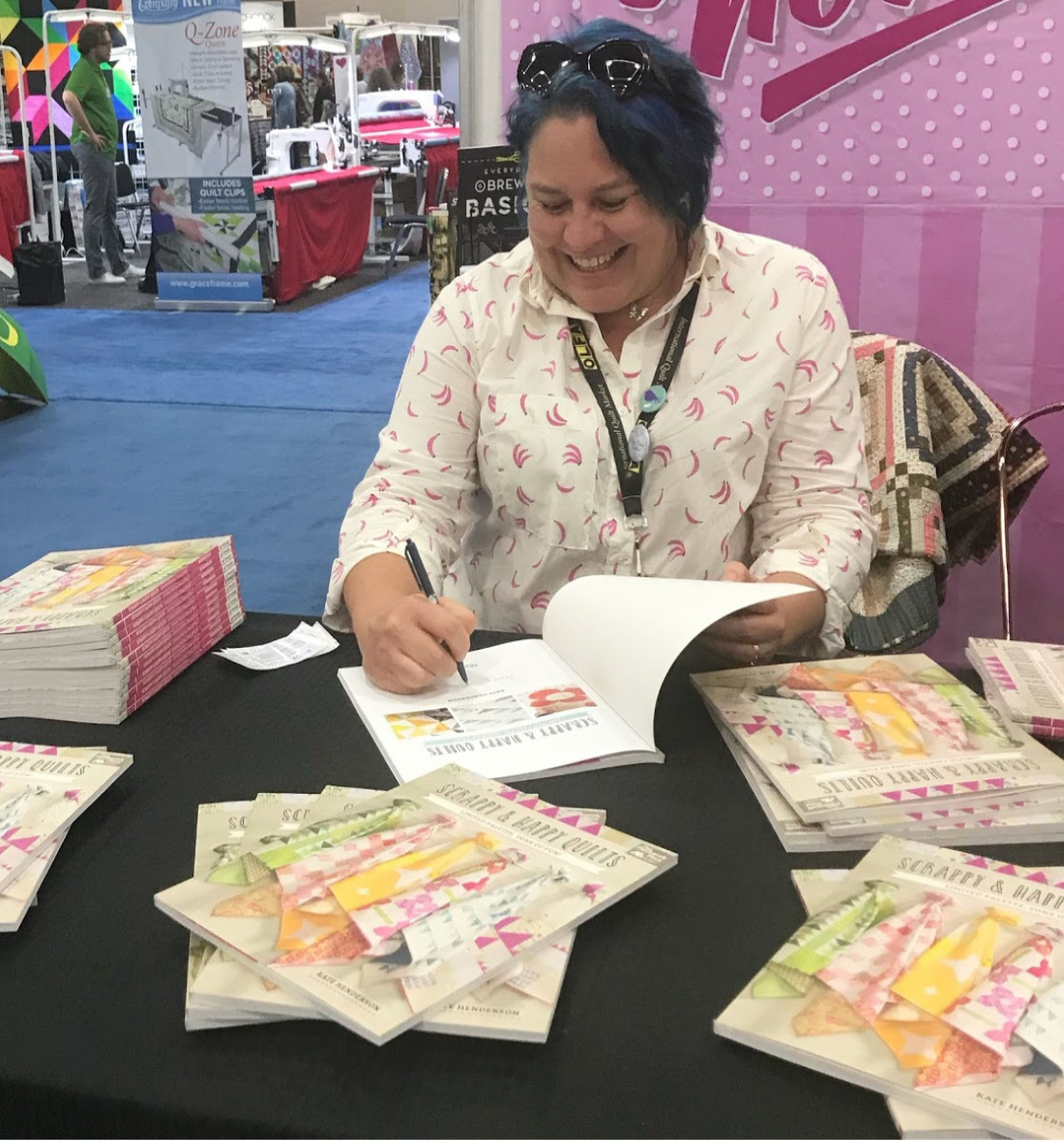
Kate Henderson at a Quilt Market book signing.
Photo courtesy of Kate Henderson
Social anxiety disorder is more than just being shy or an introvert, says Jennifer Shannon, a licensed psychotherapist specializing in cognitive behavioral therapy for anxiety. Introverts recharge their batteries by being alone, but are not terrified of being among people.
“Introverts often don’t like small talk, but people with social anxiety are afraid of it,” says Shannon, author of several books on the subject, including Don’t Feed the Monkey Mind, How to Stop the Cycle of Anxiety, Fear & Worry.
San Francisco maker, writer, and entrepreneur Kelly Rand suffers from both and feels the differences.
“Introversion means I get tired being around people and need alone time to recharge,” explains Rand, founder and CEO of Handheld Handmade, a company that helps people find handmade items via text messages. “Social anxiety manifests for me as not wanting to be someplace and trying to make myself smaller/invisible during social settings.”
Social anxiety can be especially challenging for makers, whose livelihood depends on their abilities to market themselves and their creations. “You can be an amazing artist, but not good at selling your product and this is a problem,” Shannon says.
Kennair, who imports House of Embroidery threads and ribbons and travels year-round to various conventions and trade shows, says his anxiety has definitely affected his success. Because of his panic attacks, “I have to have someone working with me. I can’t teach. I have a hard time engaging with customers. I will avoid situations such as presentations, so it limits my success.”
“When I cancel at the last minute, I’m limiting opportunities to get in front of people,” she says. “And getting in front of people face-to-face is really the best for business, so this can be highly limiting.”
It’s the same for Henderson, whose books include Strip Savvy and Scrappy & Happy Quilts. Like many makers, Henderson is quite comfortable designing and writing at home or online.
“I’m happy to write emails, but less likely to approach people at markets. When people ask me to teach, my first reaction is no,” Henderson says. “I’m trying to change this. I am grateful for social media — without that I would be a lot more isolated.”
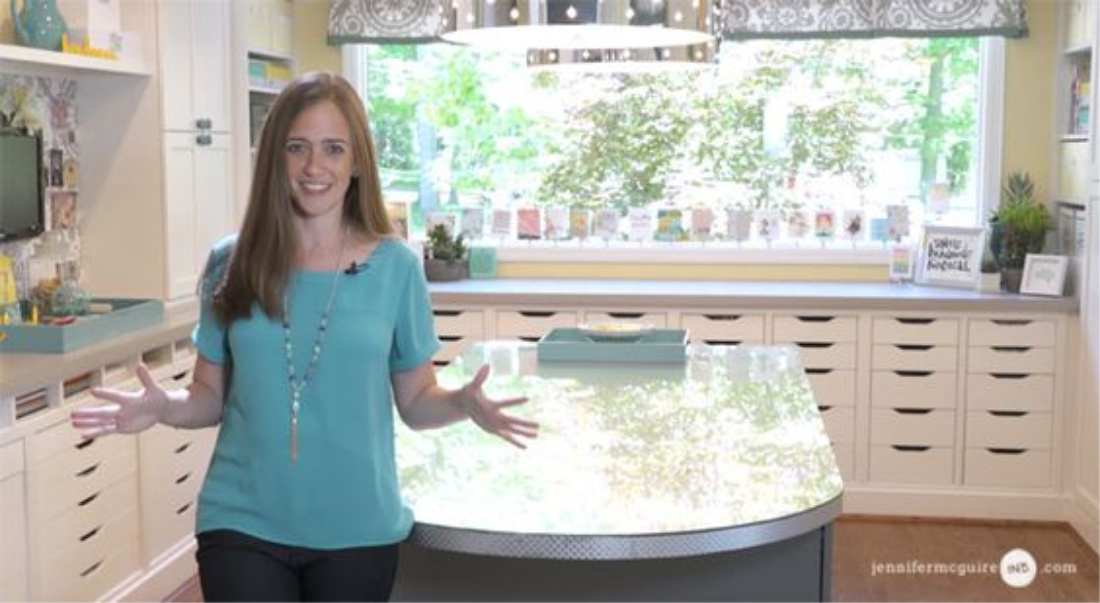
Card maker Jennifer McGuire in her studio.
Photo courtesy of Jennifer McGuire
However, she doesn’t let her anxiety affect her work. “I can’t, or I would spiral down,” she notes. “I love to teach classes. I’m OK doing that, but the lead up to it is filled with anxiety. I also struggle talking to vendors and others who I don’t know well. But everyone is so kind, so it is always OK in the end.”
Learning to Cope
“The key to managing social anxiety is to approach rather than avoid,” says Shannon, who joined Toastmasters International to overcome her own anxieties. In Toastmasters, she explains, “you face your fears week after week in a supportive environment.”
Therapy and sometimes medication also help.
Cognitive behavior therapy is the most effective treatment for this disorder, Shannon says, because it helps the client identify the cognitive distortions that create anxiety, such as “mindreading” (imagining that people have negative thoughts about you) and social perfectionism. Exposure therapy helps the person face situations they are avoiding. (See sidebar for tips on how to find the right therapist.)
In therapy, Henderson learned several coping techniques, such as thinking through new situations and preparing ahead of time. For instance, when traveling to shows, she maps out hotel and transportation locations and looks at the convention center’s layout “so I know where to go, where rest rooms are, where to find water and quiet sitting spots. When I’m in a strange city and don’t know anyone, I take a book or sketch pad and pencil so I don’t feel so self conscious about sitting alone; I just look busy.” Henderson adds, “I don’t think you ever get over anxiety. You just have to find ways to live with it. The more times you do something, the easier it gets.”
Kennair takes “just enough anti-anxiety medication to take the edge off,” but copes best by “temporarily removing myself from a situation.” This might mean taking a smoke break or staying in his room at night to re-energize instead of socializing, even though that might cut down on networking.
In social gatherings Rand finds ways to be useful, such as refreshing drinks or taking coats at a party. “This gives me a reason to talk with people.” At networking events or conferences she sets goals, such as talking to at least three people or meeting a specific person. “I’ve also gotten good at being comfortable with feeling awkward.”
After being with a lot of people, Rand also takes time alone to “recharge, especially at conferences. I make sure I have a lot of down time. And I never share hotel rooms.”
At shows, McGuire “sticks close to a friend, someone who understands me. And I am very open about my struggles. I find many other people have the same issues, so talking about it makes it easier for all of us.”
But most importantly, she says, “I don’t let my anxiety control me.”
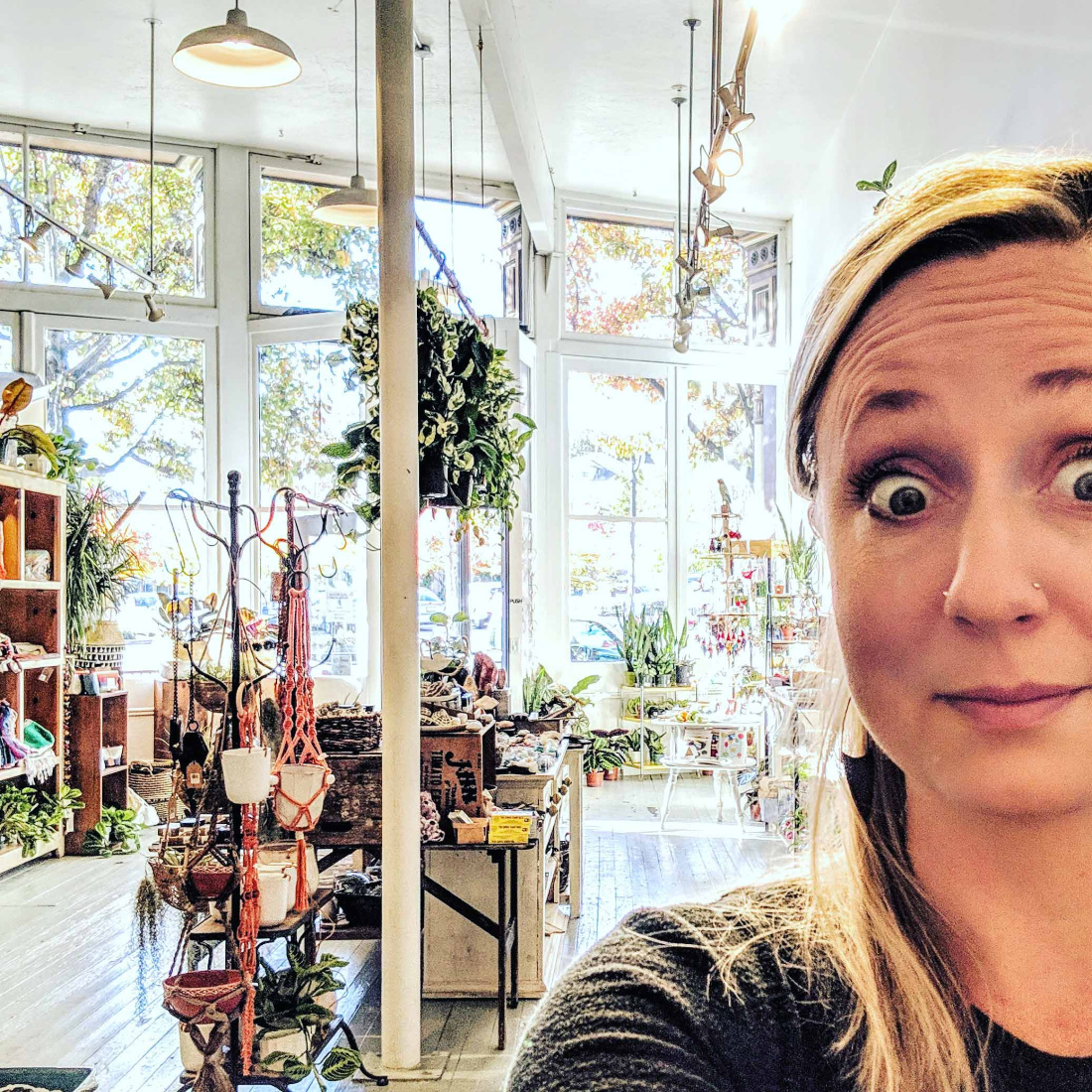

Brandi Chalker teaching her popular terrarium-making class at Craftcation.
Photo courtesy of Brandi Chalker
How to Find the Right Therapist
A therapist specializing in cognitive therapy is best at helping solve social anxiety issues, says Jennifer Shannon, a licensed psychotherapist specializing in cognitive behavioral therapy for anxiety.
When interviewing a potential therapist, two important questions to ask are:
- What is your training or background in treating social anxiety?
- What is your training in cognitive behavior therapy (CBT)?
“You want your therapist to talk about advanced workshops they have taken, experts they have consulted with, and any organizations they belong to or certificates they hold in CBT. For anxiety disorders, your therapist should talk about exposure techniques and behavioral experiments to test out faulty thoughts.”
For more information about social anxiety disorder, check out:
Anxiety and Depression Association of America
The National Institute of Mental Health (part of the U.S. Department of Health & Human Services)
How Teachers and Conference Organizers Can Help
Teachers and conference organizers are becoming more aware that many attendees are introverted, shy, or suffer from social anxiety, which affects their conference or classroom experience. But there are ways to make shy participants more comfortable.
Because she also has some social anxiety, designer and teacher Kimberly Payne, owner of Straight Stitch Designs, recognizes it in her students. “I notice if they keep to themselves and don’t strike up conversations during class.”
To combat that, she fosters a community spirit at workshops so participants can visit with and ask questions of fellow students. She also gives shy students “enough space so they have time for themselves should they need it.”
Payne also makes the first move of talking to a student who seems to be keeping to him or herself. “As a maker with social anxiety myself, I fear rejection when making the first move, so if I can be the ice breaker with everyone then hopefully they see that there isn’t anything to worry about and we can all just have a great day surrounded by other makers. Feeling comfortable from the start definitely helps it feel less overwhelming and helps a student get over the social anxiety.”

Teacher and sewist, Kimberly Payne
Photo courtesy of Kimberly Payne
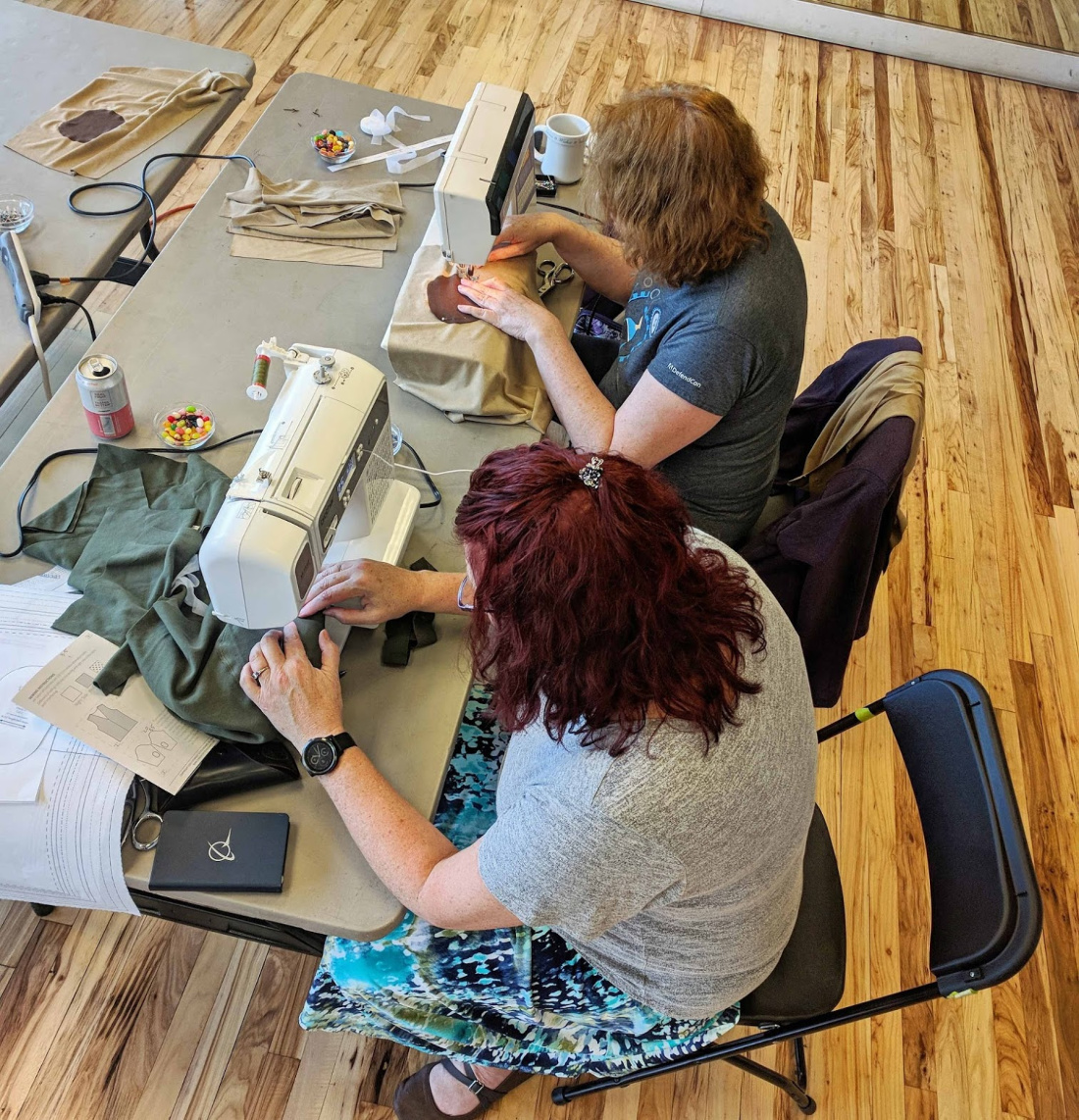
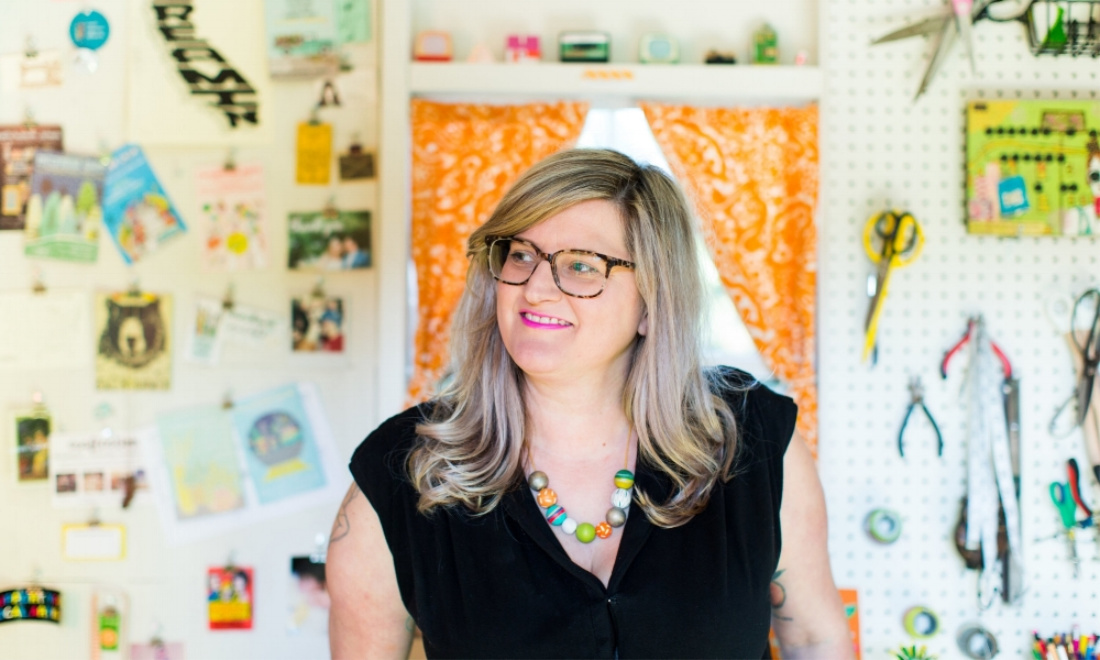
Nicole Stevenson, co-founder of Craftcation.
Photo courtesy of Nicole Stevenson
In 2017, creative entrepreneur Brandi Chalker, owner of Flourish in Petaluma, Calif., attended Craftcation by herself, and even though everyone was extremely friendly, “it’s still tough to have to constantly step outside your comfort zone, walk up to a group of people you don’t know, or sit down at a table or at a meal, introduce yourself, and try to make small talk. It’s stressful to participate in social activities by yourself. I started brainstorming ways to remedy that.”

Brandi Chalker, explaining terrarium-making.
Photo courtesy of Brandi Chalker
“This was intended to get people comfortable with walking up to folks they hadn’t yet talked to during the ‘speed dating’ round. The meet-and-greet was a huge success. People showed up by themselves, feeling awkward, but by the end there were clusters of people talking together, leaving in groups to go to the opening night happy hour, smiling and having animated conversations.”
“The goal of the mixer was to break the ice, get in some social practice and make sure each attendee left the mixer knowing at least a handful of new people,” says Stevenson.
The event was a hit and will be held again at the April 2019 Craftcation.
“Once Brandi suggested it, I wondered why it had taken us so long to include an event like this,” Stevenson adds. “Now, I can’t imagine Craftcation without it.”

Roberta G. Wax
contributor
Roberta Wax is an award-winning journalist and imperfect crafter. A former news reporter, her freelance articles and projects have appeared in a variety of newspapers and magazines, from the Los Angeles Times and Emmy magazine to Cloth Paper Scissors, Somerset Studio, Craftideas, Belle Armoire, etc. She has also designed for craft companies. Although she has no art background she was a crafty Girl Scout leader. www.creativeunblock.com

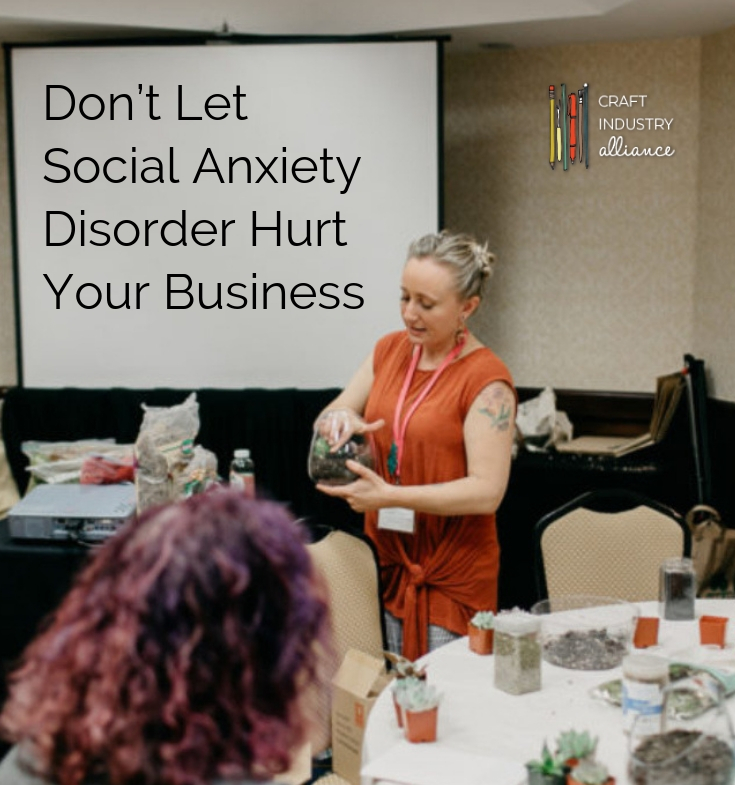
Fantastic article! Thank you.
Thank you so much! This is something I struggle with daily.
Introverts aren’t necessarily shy. A shy person can be an introvert or an extrovert. Introvertedness/extrovertedness (terms created by Dr. Carl Jung) has to do with how you need to re-energize. Whether by being alone (introvert) or by being around other people (extrovert). I’m a raging introvert, and am far from shy.